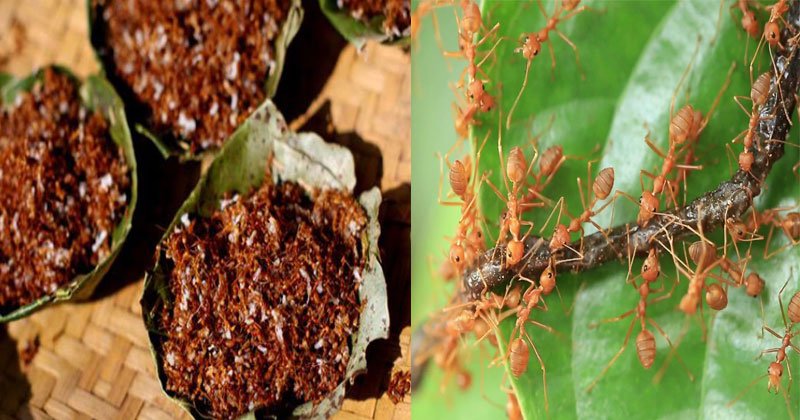Recently, the Similipal kai chutney made with red weaver ants by the tribal people of Odisha’s Mayurbhanj district (Odisha) received the geographical identity tag.
About Similipal Kai Chutney:
- The savoury chutney is popular in Mayurbhanj region for its healing properties and also deemed important for nutritional security of the tribal people.
- Many indigenous people from Mayurbhanj district venture into nearby forest to collect kai pimpudi (red weaver ant).
- Around 500 tribal families have been eking out a living by collecting and selling these insects and a chutney made with them.
- Health benefits:
- The scientists analysed the red weaver ants and found it contains valuable proteins, calcium, zinc, vitamin B-12, iron, magnesium, potassium, sodium, copper, amino acids, among others. Consuming the species can help boost the immune system and prevent diseases.
- The tribal healers also prepare a medicinal oil in which they dip the ants along with pure mustard oil.
- After a month, this concoction is used as body oil for babies and to cure rheumatism, gout, ringworm and other diseases by the tribes.
- The local people also consume this to stay fit and strong.
Key facts about Red Weaver Ants:
- These are indigenous to Mayurbhanj and are found in abundance in the jungles of every block area of the district, including in the Similipal Tiger Reserve, throughout the year.
- They form colonies with multiple nests in trees. Each nest is made of leaves stitched together with the silk produced by their larvae.
- They mostly lodge in trees like mango, sal, jambu and jackfruit. The nests are strong enough against wind and impermeable to water.
- Kai’s nests are usually elliptical in shape and range in size from single small leaf folded and bound onto itself to large nest consisting of many leaves.
- The Kai families consist of three categories of members — workers, major workers and queens. Workers and major workers are mostly orange coloured.




